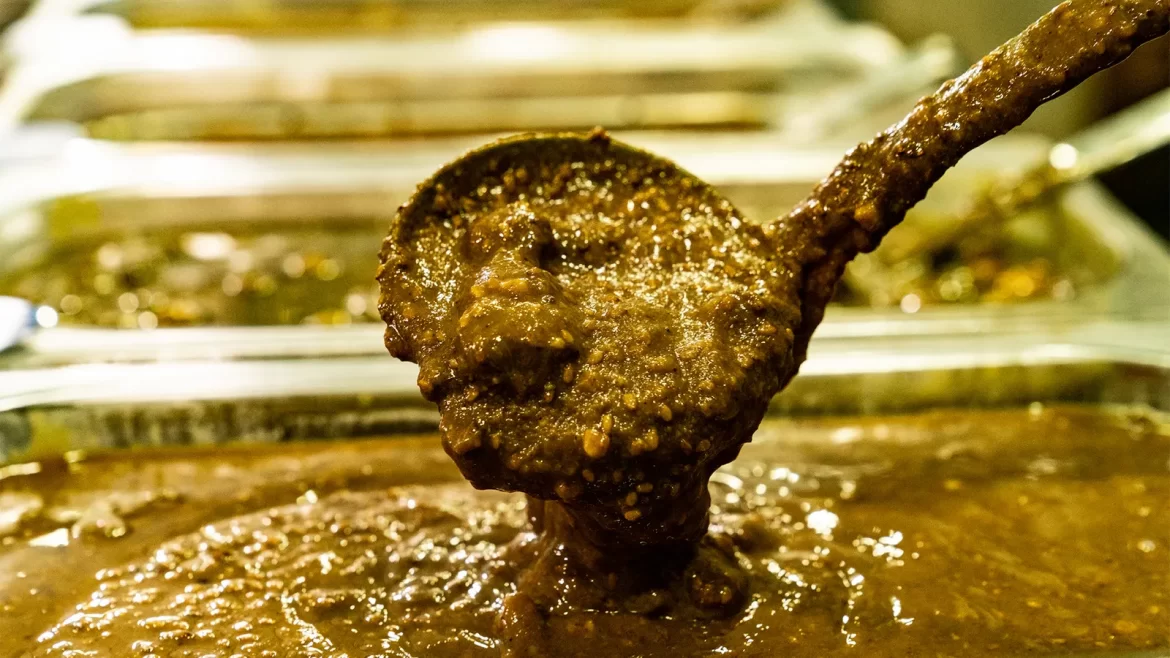This unassuming brown powder, which has been enjoyed by Tunisians for millennia, becomes a breakfast of champions when combined with olive oil and honey.
Traditionally, this plain beige-colored powder is composed of the regional staples of roasted hard durum wheat and barley that have been flavored with fennel seed, anise seed, and marjoram, and then ground.
It is frequently enriched with ground nuts – toasted pulses such as chickpeas, lentils, or fava beans – and other ingredients such as ground sesame seeds and carob to boost its already substantial nutritional value.
When blended with olive oil and honey into a thick cream and garnished with roasted nuts, this unassuming brown powder — a veritable “ugly duckling” of the culinary world — becomes a champion’s breakfast.
This ancient powder is gaining popularity in North Africa and beyond due to its purported health benefits, as people today seek for the next “superfood.”
Locals have learned that the Bsisa their mother used to make for breakfast is as excellent as, if not better than, any trendy protein shake. High in complex carbohydrates and fiber, it releases energy slowly, contains 15 to 18 g of protein per 100 g, and is loaded with vitamin C and minerals such as iron, potassium, zinc, magnesium, and calcium. Yoga retreats are offered by an increasing number of eco-hotels and are available on the menus of an increasing number of cafés.
Bsisa: A Tasty Tradition to Begin the Passover Season
It is eaten by Tunisian Muslims and Jews on various occasions, and especially on Rosh Hodesh, the first day of Nisan, the Jewish month during which jews celebrate Passover. Jews from Tunisia partake in a ritual called “Bsisa” or “El Bsisa.” The ritual serves as a bridge between the holidays of Purim and Passover and takes place entirely in the home. As the name suggests, the ritual is centered around El Bsissa dish.
Traditionally, the mother of the household would stir the olive oil into the Bsisa with the house’s key, symbolizing prosperity and the protection of the home.
Or, sometimes, the women would put their gold jewelry into the Bsisa as it is being mixed to symbolize how Jewish women gave up all of their gold to pay for the Mishkan, which served as the temporary home for the Ark of the Covenant, as described in the Book of Exodus when Moses and the Israelites were searching for their promised land.
When Islam arrived in North Africa in the seventh and eighth centuries, Bsisa became a Ramadan staple as part of S’hor, the meal consumed before dawn when fasting begins. The calories help during the long fasting hours of Ramadan.
Bsissa is a dish that varies not only by religion, but also by season and region.
Bsissa Ingredients
- 2 cups Barley (cooked)
- ½ cup wheat berries (cooked)
- Date honey
- Almonds
- Dried fruit (dates, figs etc.)
- Fennel seeds
- Coriander
- Additional sweets
- Candies and olive oil
How to Cook Bsissa
Grill the wheat, sesame seeds, and nuts gently in a large saucepan. Blend or process the ingredients in a food processor or blender until you obtain a fine powder. This “Bsissa mix” may be stored in a glass jar in the fridge and used as needed.
Prepare icing sugar by incorporating raw organic sugar or honey (both optional) and heating olive oil. The quantities vary based on personal preference. Combine the Bsissa, icing sugar, and oil to form a paste; the more oil, the more liquid the paste.
Bon appetit!
Check out more Tunisian Recipes.
If you would like to comment on this article or anything else you have seen on Carthage Magazine, leave a comment below or head over to our Facebook, Twitter and Instagram pages. You may also message us via this page.
And if you liked this article, sign up for the monthly features newsletter. A handpicked selection of stories from Carthage Magazine, delivered to your inbox.

